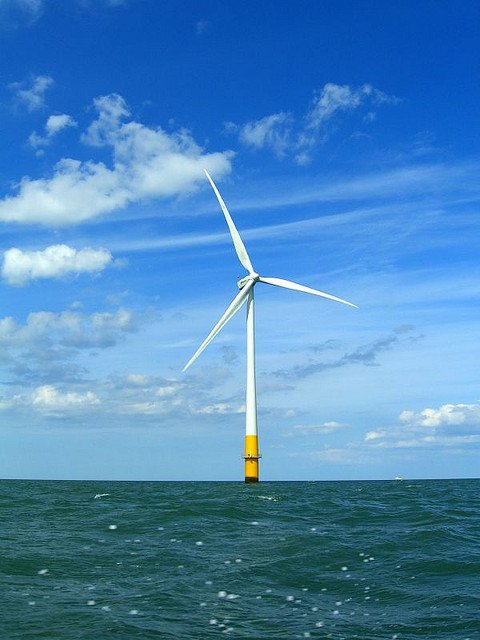Governor Charlie Baker gave his first annual State of the Commonwealth address last night, and energy was the first item on his to-do list: solar, wind, hydro, and more. Here are five snippets that highlight things he got (mostly) right, and one other issue he needs to re-think.

Massachusetts governor Charlie Baker. Credit: Mass.gov
1. “Massachusetts leads the nation in energy efficiency, but that will never be enough.”
Right on both counts, though that’s a sort of negative way of putting it. Massachusetts is indeed #1 in efficiency, and has been for five years in a row.
But the governor is right that we can’t rest on those laurels. The remaining power has to come from somewhere, and we know that it’s got to get cleaner over time.
Which, fortunately, was the subject of the rest of his energy remarks.
2. “We have a growing solar industry which we should continue to support…”
Got that right! Massachusetts—snowy (usually), wintry, northern Massachusetts—is one of the top solar states in the country. That’s thanks to really strong policies under the prior administration (including Ken Kimmell, now UCS’s president) that have led to strong results in solar for homes and businesses, and large solar.
So our task—including the governor’s—is to figure out how to keep that momentum going. The next part of Gov. Baker’s phrase was a comment on the cost of solar. It’s important to realize that the falling cost of solar has opened up new possibilities for how to structure support. We need to figure out what makes sense, what level is enough.
(And we need to get rid of barriers, like the cap on net-metering that is putting the brakes on non-residential systems in some parts of Massachusetts.)
3. “Cost competitive wind options are already available to us, and if advances in off shore wind technology bring a competitive price, then we should embrace them too.”
Two-thirds right. Onshore wind is increasingly attractive, including in New England (and a slam dunk elsewhere).
And offshore wind is definitely something else we want to bring into the Massachusetts picture. For that, though, the “competitive price” framing is way too restrictive for the near term. The solar example is a good one to keep in mind, the fact that solar in Massachusetts is where it is because the state invested in it, rather than waiting for it to happen.

Credit: phault
The same needs to happen for offshore wind. For offshore wind to be an option, we need to make it an option, by committing the commonwealth to investment in offshore wind at scale to build the infrastructure and bring down the costs.
4. “But if we’re serious about reducing our carbon footprint…, then we must significantly increase the supply of clean and affordable hydropower.”
Massachusetts does have an opportunity to tap into low-carbon hydropower, particularly from Canada, and hydro can play a role. The “clean” part isn’t a foregone conclusion, though, so that piece’ll take some looking after. And the “affordable” depends on how we structure any deal.
UCS supports the idea (in Gov. Baker’s and others’ bills) of offering long-term contracts that hydro would be allowed to bid on. That makes sense, though, only if other renewables, particularly wind and solar, get to bid, too.
That approach’ll keep hydro from crowding out the newer energy supply technologies that we’re still looking to build up. And it will help make sure the hydro costs are as attractive as can be, that would-be hydro providers sharpen their pencils before bidding in, for fear of losing out to wind.
5. “And solutions will take time to implement.”
Right again. We need action, and now. The administration this week released its latest assessment of the state’s progress toward meeting the 2020 carbon reduction goal under its Global Warming Solutions Act, and its conclusion was that we’re in good shape… as long as we get a bunch more hydro.
But these things take time. That’s why we need a diversified clean energy approach that involves each of the above pieces, rather than betting it all on hydro.
6. “ ”
That, alas, is what Gov. Baker said about another key piece of the Massachusetts energy scene, natural gas: Zilch, zippo.
It’s an important omission. The state is already definitely in danger of an overreliance on natural gas, as a recent UCS analysis showed, with three-fifths of in-state generation coming from that one fuel. And that percentage is in danger of rising as we look for how to replace retiring coal and nuclear plants.
And now, with the consent of Gov. Baker’s own department of public utilities, electric/gas companies in Massachusetts have started filing for permission to charge electric ratepayers for the cost of new gas pipelines.
Given that we’re going to be—going to need to be—in a very different place in terms of our fossil fuel use 20 years down the road, it’s one thing to have investors taking the risks for new fossil infrastructure, but very different to have ratepayers potentially saddled with those costs.
Leadership
So Gov. Baker offered hopeful signs, in his recognition of the power and potential of solar and wind (and offshore wind). And he’s right that hydro has a role to play for Massachusetts.
He still needs to get the natural gas piece right. That’s an issue we need him to lead on, and leadership means speaking out against increasing risk of overreliance, not staying mum.
So we’ll be watching, along with rest of the state and region, and hoping for real and continued leadership from Gov. Baker.
